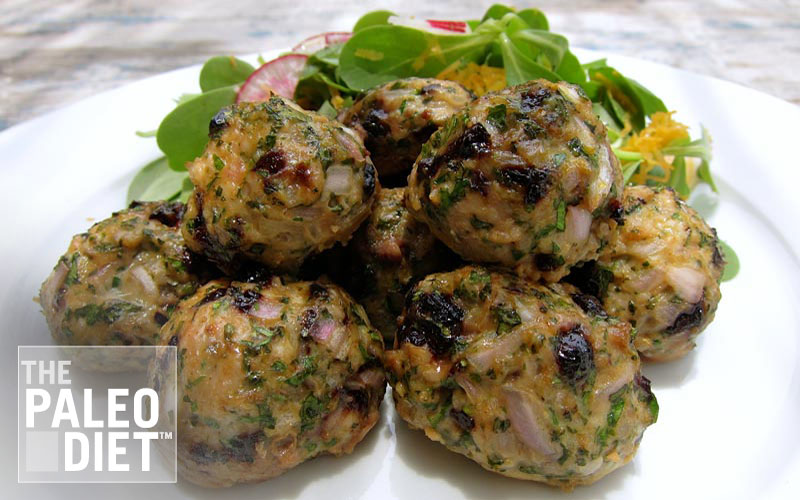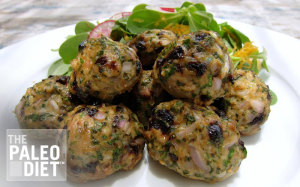Want All Day Energy Eat Cherry Mint Turkey Balls

Turkey is a great source of protein and high-quality fat. Paired with steamed vegetables or a fresh, garden salad, our Cherry Mint Turkey Balls offer enticing flavors and clean-burning, all-day energy.
Wait a second. Doesn’t eating turkey induce sleepiness?
This urban legend, most likely inspired by our inclination for napping after Thanksgiving meals, actually has nothing to do with turkey and much more to do with overeating.
If you’d like to impress your friends with your knowledge of amusing, overly technical scientific jargon, the scientific term for food-induced drowsiness is postprandial somnolence.
You might try informing your boss someday that you’ll be away from your desk while you sort out some postprandial somnolence issues.
If you say it with enough confidence, it just might work.
Turkey contains tryptophan, an essential amino acid that is the precursor to serotonin and melatonin (by way of serotonin), the neurotransmitters that regulate sleep.1
However, turkey isn’t any higher in tryptophan compared to related foods.
25 g of turkey protein contains 284 mg of tryptophan.
You would consume 25 grams of protein from a serving of meat weighing between 100 and 150 grams.
Leaner cuts have more protein; more fatty cuts have less.
25 g of beef, lamb, pork, and chicken protein contain 280 mg, 292 mg, 318 mg, and 292 mg of tryptophan, respectively.2
In other words, all types of meat have very similar tryptophan levels.
Interestingly, research shows that high-carbohydrate meals increase serum tryptophan concentrations, whereas meals of protein plus fat have the opposite effect.3
So be careful. If your boss knows you’re eating Paleo, they might also know your postprandial somnolence issues are completely unfounded.

All Day Energy Cherry Mint Turkey Balls
Ingredients
Method
- Chop the cherries finely.
- Wash and spin-dry the herbs before chopping them finely.
- Break the eggs into a bowl and mix well.
- Put all the ingredients into a mixing bowl and, using your hands, mix everything together.
- Form mixture into balls and place on a baking sheet.
- Bake at 350°F for about 20 minutes or until the balls are lightly browned.
Christopher James Clark, B.B.A.
www.ChristopherJamesClark.comChristopher James Clark, B.B.A. is an award-winning writer, consultant, and chef with specialized knowledge in nutritional science and healing cuisine. He has a Business Administration degree from the University of Michigan and formerly worked as a revenue management analyst for a Fortune 100 company. For the past decade-plus, he has been designing menus, recipes, and food concepts for restaurants and spas, coaching private clients, teaching cooking workshops worldwide, and managing the kitchen for a renowned Greek yoga resort. Clark is the author of the critically acclaimed, award-winning book, Nutritional Grail
References
1. Woolf, P. & Lee, L. (July 1, 1977). Effect of the Serotonin Precursor, Tryptophan, on Pituitary Hormone Secretion. The Journal of Clinical Endocrinology & Metabolism, 45(1). Retrieved from http://dx.doi.org/10.1210/jcem-45-1-123
2. Nutrition Data. All figures retrieved July 4, 2014, from http://nutritiondata.self.com
3. Lyons, PM. & Truswell, AS. (March 1988). Serotonin precursor is influenced by the type of carbohydrate meal in healthy adults. The American Journal of Clinical Nutrition, 47(3), (433-439). Retrieved from http://ajcn.nutrition.org/content/47/3/433.short